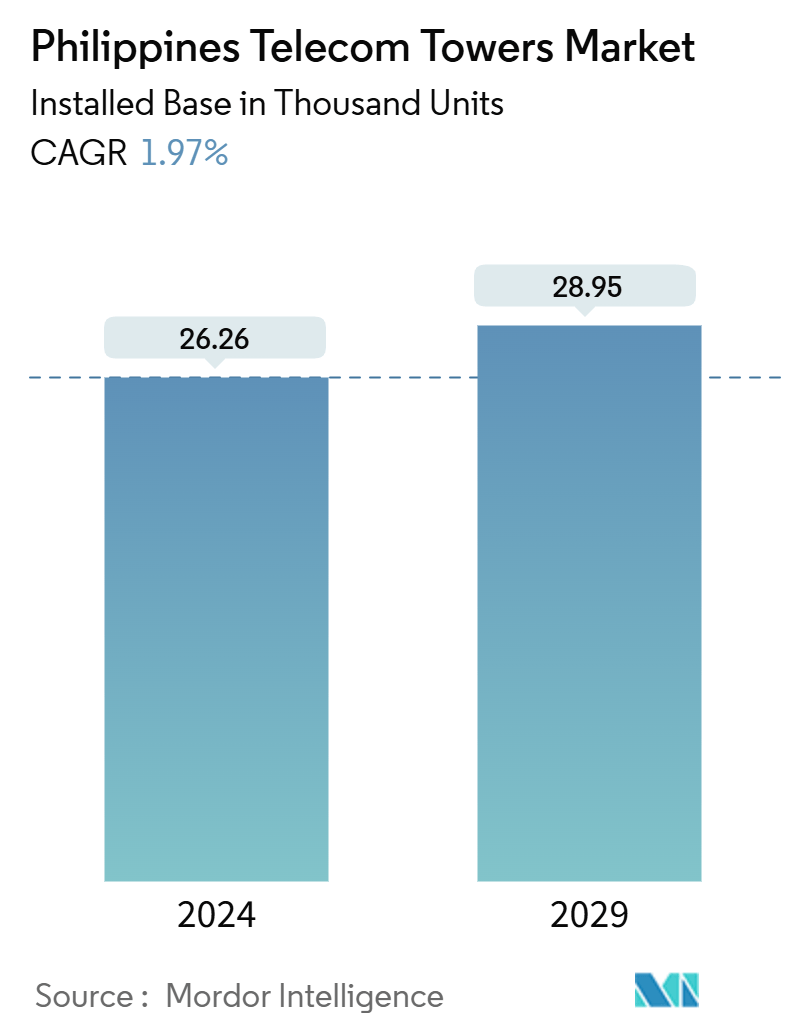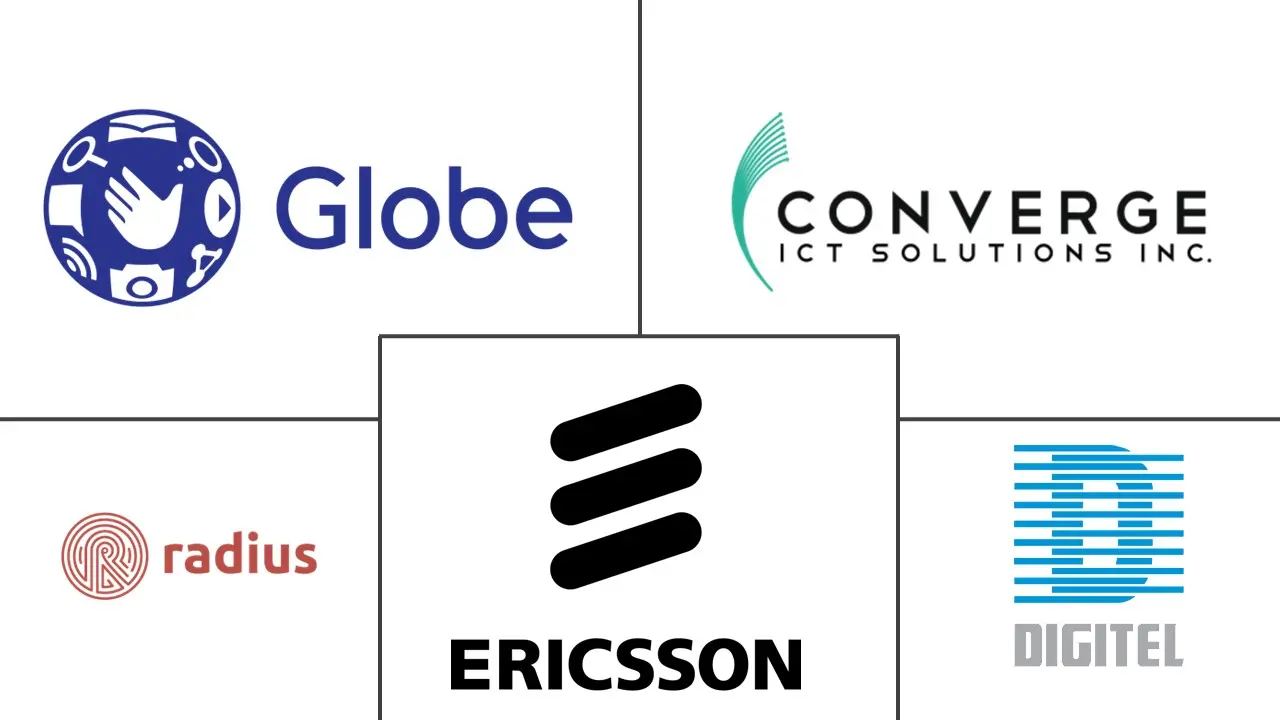Market Size of Philippines Telecom Towers Industry

| Study Period | 2019 - 2029 |
| Base Year For Estimation | 2023 |
| Market Volume (2024) | 26.26 Thousand units |
| Market Volume (2029) | 28.95 Thousand units |
| CAGR (2024 - 2029) | 1.97 % |
| Market Concentration | Medium |
Major Players
*Disclaimer: Major Players sorted in no particular order |
Philippines Telecom Towers Market Analysis
The Philippines Telecom Towers Market size in terms of installed base is expected to grow from 26.26 Thousand units in 2024 to 28.95 Thousand units by 2029, at a CAGR of 1.97% during the forecast period (2024-2029).
- The Philippines boasts a rapidly expanding mobile penetration rate. The growing affordability and accessibility of smartphones, combined with a rising demand for mobile connectivity, necessitate an increase in telecom towers. This expansion aims to ensure adequate coverage and capacity for the nation's burgeoning mobile subscriber base. While 99% of the 114-million-strong population owns a smartphone, only 70% engage with the internet via these devices. As reported by the Department of Information and Communications Technology (DICT), the country's primary ICT planning and implementing agency, internet penetration stands at 72.7%.
- Moreover, being an archipelago with thousands of islands, the Philippines faces unique challenges in network coverage. Ensuring reliable mobile connectivity across its diverse regions demands extensive infrastructure. Here, telecom towers are pivotal, not just for broadening network coverage but also for bridging the connectivity divide in remote and rural locales.
- Furthermore, driven by surges in social media engagement, e-commerce expansion, and a broader digital shift, the Philippines showcases a robust appetite for internet services. Telecom towers are vital in this landscape, facilitating broadband connectivity, bolstering data-heavy services, and enhancing internet access—especially in regions lacking wired infrastructure. StatCounter highlights the dominance of Facebook in the Philippine social media arena, capturing a notable 88% share in 2023. This trend underscores the platform's growing user base and its expanding reach for social advertising.
- In addition, as video streaming, online gaming, and digital content consumption gain traction, the Philippines witnesses a marked uptick in data consumption. Telecom towers are indispensable to meet this escalating demand, bolstering network capacity and ensuring swift, reliable data transmission.
- Amidst robust economic growth and a sweeping digital transformation across industries, the Philippines underscores the escalating need for dependable communication networks. This demand fuels the necessity for telecom towers, ensuring enhanced connectivity for both businesses and individuals. The Philippine Statistics Authority noted that the Philippines wrapped up 2023 as Southeast Asia's fastest-growing economy, achieving a commendable 5.6% growth rate—slightly below the government's 6.0 to 7.0% target. If projections hold, the nation is poised for another significant growth spurt in 2024, showcasing its resilience against global economic headwinds.
- However, telecom towers require an uninterrupted power supply to ensure 24x7 network availability, fulfilled mainly by electricity, batteries, and diesel generators. The environmental impacts of telecom towers have always been a significant concern. Radiation from mobile towers has been an important issue, and it is recognized as an unseen and subtle pollutant affecting life forms in multiple ways. Moreover, using non-renewable sources to run power systems, such as diesel, significantly pollutes the environment.

